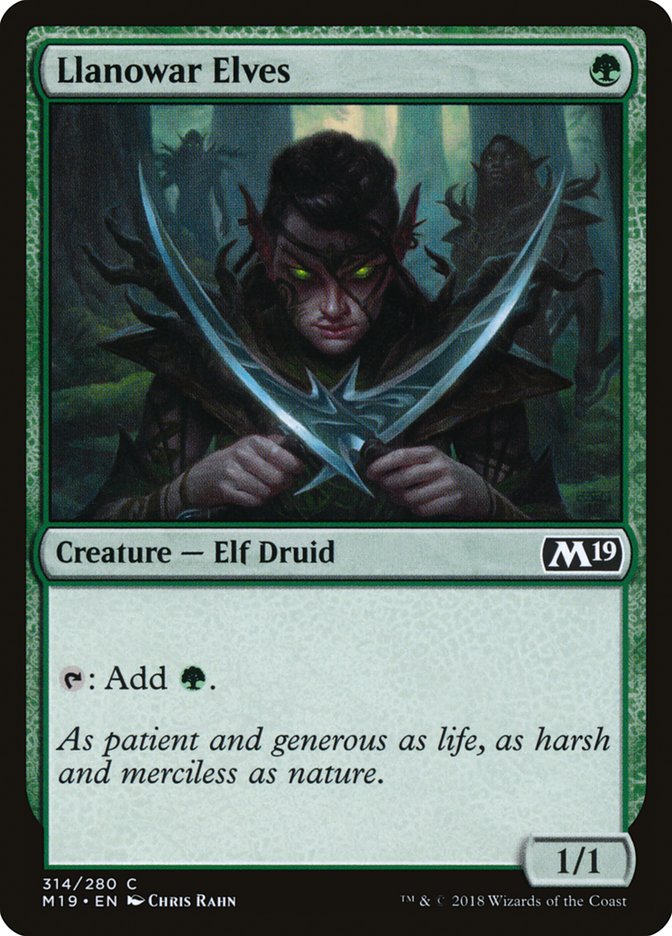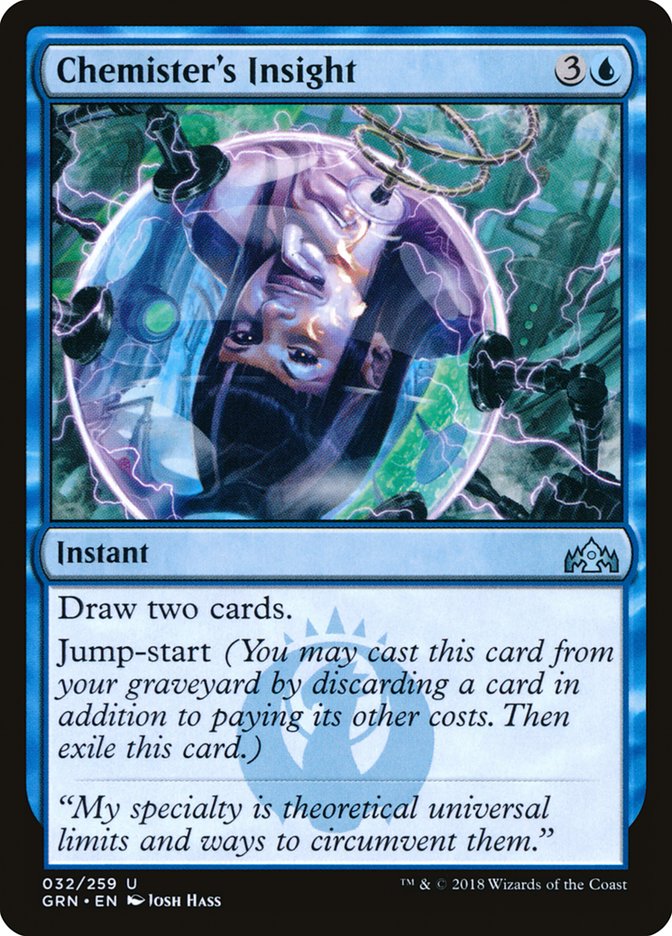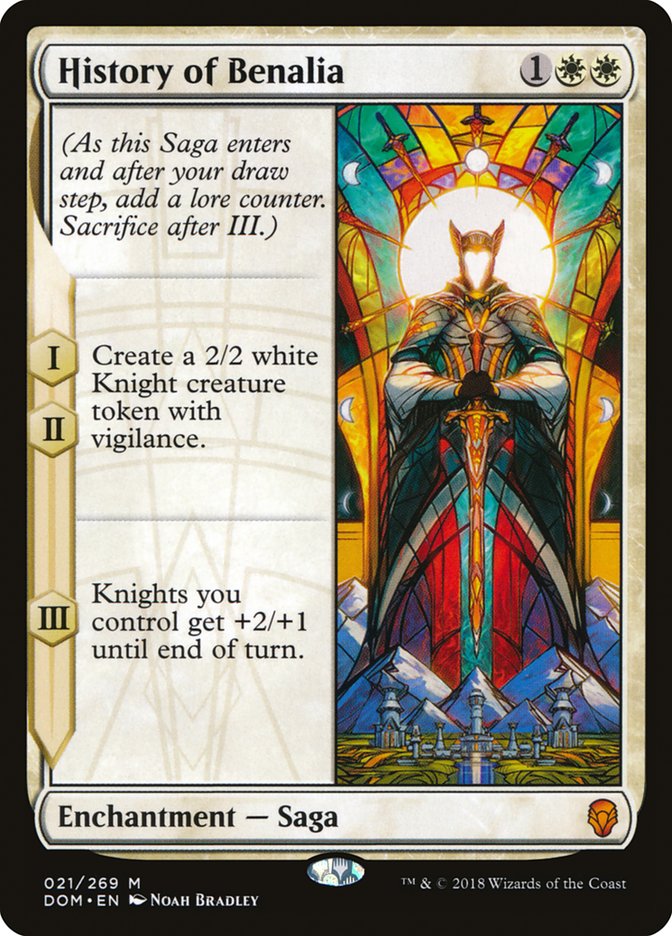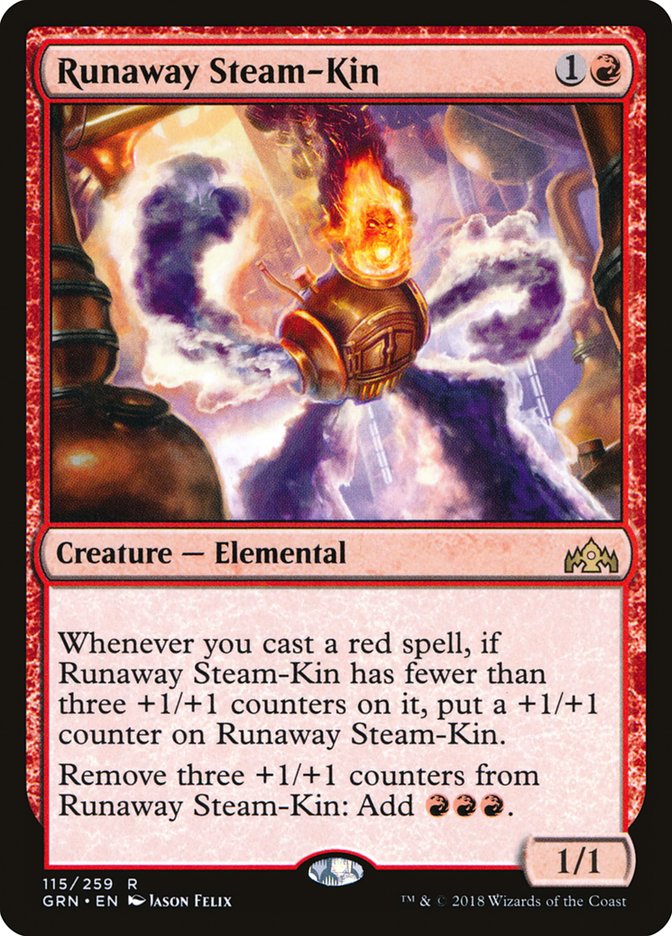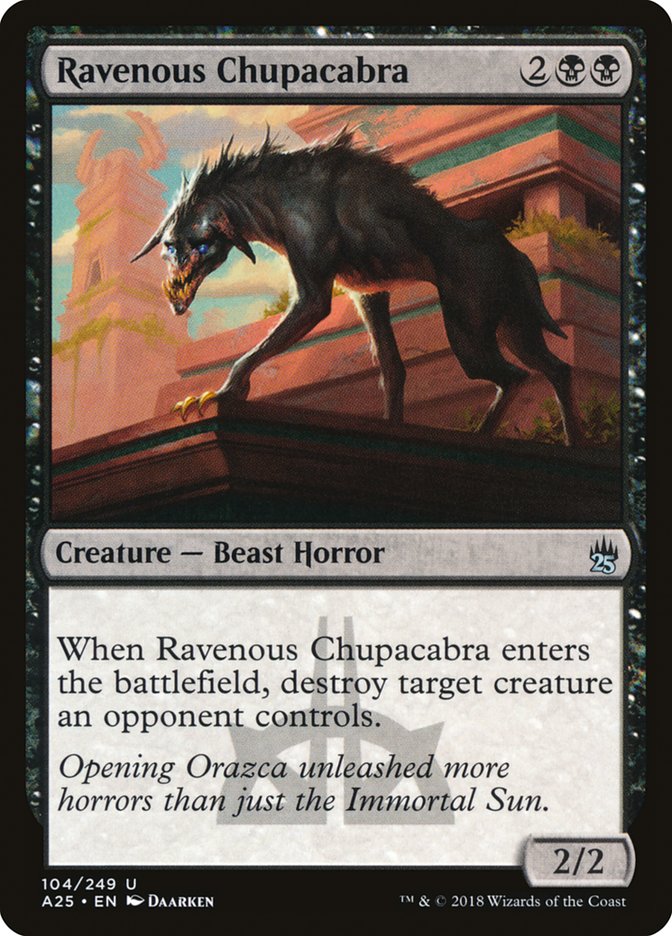We have results!
With a PTQ on Magic Online and two different events featuring Guilds of Ravnica Standard events at SCG Columbus, we have a ton
of information to work with, and it’s easier to see what decks are going to
be looking like.
Over the course of a Standard format, there are going to be cards that we
call pillars, and they’re effectively the reason that people play certain
decks. Teferi is the reason we play decks with blue and white cards,
Aurelia is the biggest draw to Boros decks, and so forth. These are the
cards that will be linchpins of the decks that have them and are what will
end up defining the most important plays of those decks.
Breaking decks down by the cards that play them is an easy way to map out
what one can expect to play against in a given format and understand the
play patterns required to beat those cards. Not all pillars of a format are
going to necessarily be the big flashy cards that are ending the game when
they hit the battlefield. Sometimes they’re going to be the enablers that
make a deck go from balanced to broken.
Llanowar Elves
Llanowar Elves is the most obvious example of something that won’t
necessarily be what is making life miserable, but it sure is making the
opponent’s deck feel much better than it should be.
Creatures (35)
Spells (25)
Sideboard

When people think Llanowar Elves in Standard, they think Steel Leaf
Champion. The aggressive strategy wasn’t well represented early on and a
big reason for that are its matchups. It’s hard to say what exactly
Mono-Green is crushing, but with all of the removal running around and the
anti-creature measures being used to attack the red decks and the token
decks, aggressive green strategies will likely struggle without having some
sort of card advantage engine to circumvent sweepers and the likes of
Ravenous Chupacabra.
That said, the games with Llanowar Elves are going to be so different than
the games without Llanowar Elves, and the three-mana plays on the second
turn epitomize how impactful an extra mana accelerant can be. Turn 3 5/4 is
easy, turn 2 5/4 is not. Factor that in with the point that sometimes
someone has Llanowar Elves on the play, and it’s easy to see why
it’s the card that will define the decks, rather than the cards it’s
cranking out.
Creatures (21)
- 4 Llanowar Elves
- 4 Merfolk Branchwalker
- 4 Jadelight Ranger
- 3 Ravenous Chupacabra
- 1 District Guide
- 3 Golgari Findbroker
- 2 Plaguecrafter
Planeswalkers (7)
Lands (16)
Spells (16)

Yamakiller’s PTQ-winning version of Golgari Midrange is an example of
Llanowar Elves being repurposed. Rather than being used to crank out large
threats, the goal of this deck is just to play all its cards and use them
to make profitable exchanges. Eventually, Vraska and friends will generate
enough plus-ones (in terms of card advantage) that it will pull ahead.
Everything in the deck generates card advantage in some way, shape, or
form, and there tends to be two games that this deck loses: the games it
floods, and the games it doesn’t get to cast all its spells. Having an
accelerant in Llanowar Elves reduces the frequency of the “died before I
cast all of my spells” games. This deck cares more about having the ability
to double-spell as the game progresses, as those are the plays that allow
it to answer what the opponent is doing and continue to develop its own
battlefield simultaneously. Being able to jam Jadelight Ranger and District
Guide a turn early is just a bonus.
Chemister’s Insight
For the time being, Chemister’s Insight is the big draw towards playing
blue in Standard. Glimmer of Genius and Hieroglyphic Illumination were both
very popular during their time in Standard, and it’s easy to see why the
halfway point between two cards and a copy of Think Twice is popular among
control mages.
Creatures (8)
Lands (11)
Spells (41)

One of the more unique decks to do well over the weekend was the Izzet
Spells deck that on paper looks…anemic. After playing a few games with
it, I can confidently say that while it looks better on paper than it does
during a game, its game against non-creature strategies and decks that
demand a wall of countermagic tend to be a bit of a struggle.
Creature decks, on the other hand, have so much trouble ever getting any
kind of traction against this deck. It very rarely runs out of gas, and
it’s as a result of Chemister’s Insight keeping the cards coming.
I said it once
earlier this week
and I’ll say it again: Teferi will eventually dominate Standard. That said,
it will be alongside Chemister’s Insight, and it’ll take some time figuring
out the exact shell of control that’s going to do it. There are two big
directions to play him thus far: one-for-ones and sweepers.
Planeswalkers (4)
Lands (19)
Spells (37)
- 3 Plains
- 5 Island
- 3 Syncopate
- 3 Settle the Wreckage
- 4 Azor's Gateway
- 4 Seal Away
- 4 Sinister Sabotage
- 4 Deafening Clarion
- 3 Chemister's Insight
- 4 Expansion
Sideboard

This deck is playing with hammers. The goal here is to have a creatureless
battlefield and resolve a Teferi. The easiest way to do that is to play a
pile of cards that kill all the creatures. The list is fairly
obviously built to beat up on the Mono-Red Aggro decks and the go-wide
Boros and Selesnya decks, as evinced by Deafening Clarion, but it isn’t an
accident that LimitedPower settled on seven sweepers in their maindeck.
This type of deck is planning to lean into the card advantage its sweepers
provide, meaning that it doesn’t need as many copies of Chemister’s
Insight. Even though it doesn’t play the full four, it’s squarely a
Chemister’s Insight deck.
Creatures (1)
Planeswalkers (4)
Lands (27)
Spells (28)

On the other hand, we have the one-for-one side of things. Rather than
focusing so hard on getting its card advantage with three-for-one swings,
it’s perfectly happy to grind both players down to a handful of resources,
then use its copies of Chemister’s Insight and Search for Azcanta to
eventually have an edge on the opponent’s resources.
Yep. Rain of Soot is a sweeper. Good talk.
Planeswalkers (5)
Lands (16)
Spells (39)

This horse ain’t dead, so I’ll keep beating it.
Pushing Teferi’s Howling Mine-meets-kill condition purpose to the extreme
is the Bant Nexus deck that English National Champion Autumn Burchett has
been streaming as of late.
Some of the decks outlined while looking at the pillars of a format aren’t
always going to be the tier one decks of the format. Think of it as
something more akin to a mental exercise that we can use to identify the
major players in Standard and everything that they make possible.
History of Benalia
Creatures for attacking and creatures for blocking. Some of the control
decks will sideboard History of Benalia, but “History of Benalia decks” are
going to be more interested in utilizing the Knight tokens in both
directions.
Creatures (22)
- 4 Adanto Vanguard
- 4 Knight of Grace
- 4 Lyra Dawnbringer
- 3 Shalai, Voice of Plenty
- 4 Resplendent Angel
- 3 Aurelia, Exemplar of Justice
Planeswalkers (1)
Lands (8)
Spells (30)

Between quarterfinals appearances in the PTQ and Team Constructed Open, a
top 4 in the
#SCGCOL
Classic, and taking home the plaque in said Classic, early results indicate
that this is the way to build a Boros deck… if you’re interested in beating
up on creatures.
Playing a Boros aggressively-slanted midrange deck that also has the
privilege of maindecking sweepers is no joke. Adanto Vanguard even has the
ability to live through it!
This deck doesn’t have a ton of ways to accrue card advantage without
triggering Resplendent Angel or using History of Benalia and Ajani,
Adversary of Tyrants to generate Grizzly Bears. This means it’ll likely
suffer if grindy, removal-heavy midrange decks end up defining the format,
but this is a great deck to have in one’s back pocket for obliterating
creatures.
Creatures (22)
- 2 Dauntless Bodyguard
- 4 Knight of Grace
- 3 Lyra Dawnbringer
- 3 Boros Challenger
- 3 Aurelia, Exemplar of Justice
- 4 Swiftblade Vindicator
- 3 Tajic, Legion's Edge
Lands (8)
Spells (30)

Talk about a deck that has evolved a bunch over the past week or so.
Boros Aggro keeps bouncing between “a white deck for History of Benalia,
featuring some red cards” and “a red deck for Goblin Chainwhirler,
featuring some white cards.” Most lists seem to be settling closer to the
white side of things, with the pair of bodies being more relevant than the
enters-the-battlefield effect of Goblin Chainwhirler. If piles of little
creatures end up becoming defining features of Standard, that could end up
flipping.
As long as we see piles of removal spells dominating things, people who
want to get their Sacred Foundry-beatdown on are going to be far more
interested in History of Benalia, Legion’s Landing, and Knight of Grace to
fight through them, rather than the explosiveness that Goblin Chainwhirler
offers.
That’s completely ignoring the fact that building a manabase to cast
History of Benalia is much easier than building a manabase with the intent
of casting Goblin Chainwhirler. Anybody who’s read my work before knows
how highly I’m going to value a manabase that’s buttery smooth
.
Creatures (14)
- 2 Shalai, Voice of Plenty
- 4 Emmara, Soul of the Accord
- 2 District Guide
- 4 Venerated Loxodon
- 2 Trostani Discordant
Lands (9)
Spells (37)

I’d be remiss if I didn’t mention the deck that won #SCGCOL
in the Standard seat. History of Benalia is really stretched to be its best
card in this shell, where having vigilance doesn’t mean blocking after
attacks; it means tapping for mana despite attacking.
The big differences that can be seen from tokens list to tokens list is
whether the deck contains Benalish Marshal.
Creatures (24)
- 3 Snubhorn Sentry
- 4 Benalish Marshal
- 2 Shalai, Voice of Plenty
- 4 Thorn Lieutenant
- 3 Emmara, Soul of the Accord
- 4 Venerated Loxodon
- 4 Hunted Witness
Lands (8)
Spells (28)

This list is very interested in beating red decks and other aggro lists at
every opportunity. Seven one-drops with Benalish Marshal also demonstrates
that this list is very interested in attacking and using its tokens to
leverage battlefield positionm a contrast from the previous list having a
sort of “make an insurmountable battlefield, then attack” plan.
It’s hard to say whether Selesnya Tokens will be able to command the
authority one would expect from a deck that was on both sides of the finals
during week one Standard, but with all of the sweepers available to other
decks, the deck will likely have to make some serious adaptations to keep
up.
Runaway Steam-Kin
Yeah, not Goblin Chainwhirler. Seriously. It’s likely that Runaway
Steam-kin won’t dominate this Standard format in the same way that Goblin
Chainwhirler had a vice grip on the format for the last few months, but it
is absolutely the draw to playing red decks in Standard right now, acting
as a body and means of casting additional spells in a turn.
Creatures (20)
Spells (40)
Sideboard

For the completely unsurprising version of this deck, look no further than
the fourth-place list from the main event of SCG Columbus. There isn’t
anything particularly fancy going on here and nothing we didn’t see last
format.
What’s worth noting is the difference in the way that people are using
Runaway Steam-Kin. The aggressive versions of the deck are primarily using
it as a 4/4 body for two mana. Some other versions are moving away from The
Flame of Keld and trying to simply maindeck Experimental Frenzy:
Creatures (22)
Spells (38)

Former SCG Tour Invitational Champion, Max McVety, brought a slightly
bigger version of red that was functioning on a similar axis, choosing to
lean more into the mana production that Runaway Steam-Kin offered.
The jury is still out on which version of the deck is “strictly” better.
Experimental Frenzy is a more powerful card than The Flame of Keld, but
also costs twice as much mana and isn’t nearly as explosive.
Creatures (22)
- 3 Siege-Gang Commander
- 3 Rekindling Phoenix
- 4 Goblin Chainwhirler
- 3 Dismissive Pyromancer
- 3 Legion Warboss
- 4 Runaway Steam-Kin
- 2 Goblin Cratermaker
Lands (1)
Spells (37)
Sideboard

One of the common misconceptions with cards like Goblin Chainwhirler and
the Steam-Kin is that because they’re undercosted and proactive, they’re
inherently aggressive. In decks like this one, they’re simply bridges to
the later portion of the game. This deck is absolutely capable of some fast
kills that are hard to stop, but with exactly zero creatures coming down on
the first turn, it’s easy to tell that attacking isn’t everything that the
deck is interested in doing.
While they both play similar roles in this deck, Chainwhirler and Steam-Kin
are both accomplishing their goals via different means. Steam-Kin’s role is
easier to piece together, as the text on the card more or less lets us know
that it’s going to let its controller rush to the later parts of the game
at an unusually fast rate, due to the mana production ability that it has.
The inclusion of Experimental Frenzy and the like just makes sure that the
Steam-Kin gets to keep getting fueled to cast more spells, which means more
mana, which means more spells, and so forth.
The way that Chainwhirler does it is a bit more subtle.
The strength of Goblin Chainwhirler in this style of deck is that it
eliminates a mode of attack when trying to beat this style of deck. Most
“fair” games of Magic are going to be won by a deck going over or under the
other one. Chainwhirler makes it nearly impossible to “go under” decks
playing it. The fast draws are punished by the Chainwhirler trigger and
then anything on the battlefield is unlikely to be able to rumble with a
3/3 first strike on the third turn; and then there’s a Rekindling Phoenix
in the way; and then there’s a Siege-Gang Commander on the table; and so
forth.
Ravenous Chupacabra
Chups (pronounced “Choops”) is fine when there are a couple of creature
decks. When most of the decks are creature-based attrition decks, Ravenous
Chupacabra is problematically powerful. Patrick Sullivan said it best when
the card was first previewed back in January, and I’ll link to his rant here.
Creatures (21)
- 4 Llanowar Elves
- 4 Merfolk Branchwalker
- 4 Jadelight Ranger
- 3 Ravenous Chupacabra
- 1 District Guide
- 3 Golgari Findbroker
- 2 Plaguecrafter
Planeswalkers (7)
Lands (16)
Spells (16)

http://www.starcitygames.com/decks/124302
Here we are again.
Simply put, Chupacabra just keeps the battlefield clear and lets the card
advantage engines of the deck take over. On top of that, Ravenous
Chupacabra is the most recurring form of creature removal in the format,
and its place in this deck is particularly valuable. Having both Golgari
Findbroker and The Eldest Reborn turn into removal spells (eventually) is a
big game.
This isn’t the only form of the deck that’s pushing the recursion side of
things.
Creatures (31)
- 4 Llanowar Elves
- 4 Wildgrowth Walker
- 4 Merfolk Branchwalker
- 4 Seekers' Squire
- 4 Jadelight Ranger
- 2 Ravenous Chupacabra
- 2 Izoni, Thousand-Eyed
- 1 Molderhulk
- 1 Golgari Findbroker
- 1 Doom Whisperer
- 4 Plaguecrafter
Lands (22)
Spells (7)

On top of having Find as a way to always generate card advantage, Gruesome
Menagerie served as a way to get ahead on the battlefield while also
working to generate the card selection that comes with all its explore
creatures.
This version of the deck having the explore package with Wildgrowth Walker,
as well as the sweeper half of Find, is great at keeping aggressive
creature decks down, as well as the tokens strategies that are trying to
just go wide.
Creatures (13)
- 1 Ravenous Chupacabra
- 3 Nicol Bolas, the Ravager
- 3 Doom Whisperer
- 2 Lazav, the Multifarious
- 4 Thief of Sanity
Lands (24)
Spells (23)

Ravenous Chupacabra may not be a central piece of this deck’s puzzle, but
its inclusion says a lot about what the deck is trying to do. When playing
with cards like The Eldest Reborn, Ravenous Chupacabra having a body
stapled onto its Doom Blade becomes particularly relevant for more reasons
than “sometimes my 2/2 gets to get involved in combat.”
When we call something a “Ravenous Chupacabra deck,” it sends the message
that it’s a value-oriented grindy deck that’s going to be trying to
leverage the fact that Ravenous Chupacabra is almost always going to be a
two-for-one, and it’s likely that there’s some sort of recursive element at
play in order to incentivize its inclusion.
Wrapping Up
The important thing to recognize when defining archetypes by their cards is
that it’s simply a way to compartmentalize things, not a hard rule to live
by. As the format evolves and adapts, the key players are going to change,
as are their power level, relative to everything else that’s going on.
As long as we stay sharp and understand what it is that different cards in
the format are trying to make their decks accomplish, it’s going to be
easier to suss out how exactly to prepare to beat them ourselves.


